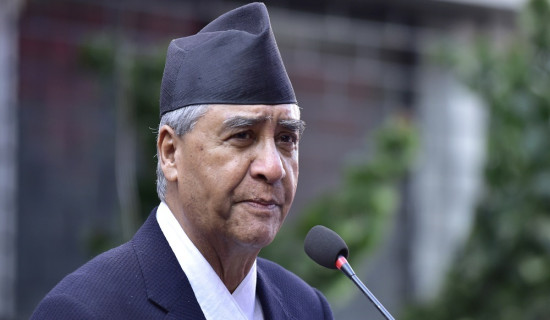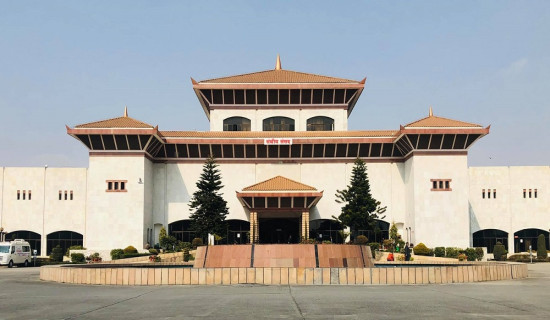- Sunday, 31 August 2025
Recent US-Japan Trade Deal and Plaza Accord
Muhammad Zamir Assadi
In a moment steeped in déjà vu, US President Donald Trump on July 22 unveiled a sweeping new trade pact with Japan. At first glance, the deal appeared pragmatic. Japanese imports will face a baseline 15% tariff, down from the initially threatened 25%, in exchange for a Japanese pledge to invest $550 billion into the American economy. The White House framed it as “the single largest foreign investment commitment ever secured by any country.”
But history
casts a long shadow. The agreement may appear cooperative, but its contours
echo a familiar pattern. For Tokyo, the memory of the 1985 Plaza Accord looms
large, when Japan bowed to US pressure to revalue the yen. What followed were
twin asset bubbles, a financial crash, and what came to be known as “two lost
decades.”
Is the new
agreement another Plaza Accord in disguise?
A Tariff
Lower Than Threatened and Higher Than Comfortable
Luckily,
Tokyo may have dodged the 25% tariff bullet, but the 15% levy might still hit
hard. According to the Office of the United States Trade Representative (USTR),
US goods imports from Japan totaled $148.2 billion in 2024. A flat 15% tariff
amounts to an annual $22.23 billion trade penalty, a cost that will be
shouldered by Japanese firms, US consumers, or both.
Quoting data
from Japan’s Ministry of Finance, the United States remained Japan’s largest
export destination in 2024, absorbing 20 percent of total goods exports in yen
terms. Prior to the recent US-Japan trade agreement, Japanese exports to the
US, particularly in automobiles and electronics, historically faced low or zero
tariffs, with passenger cars generally taxed at just 2.5%. The new deal makes
the burden especially acute for key export sectors like automobiles and
electronics, which constitute the bulk of Japan’s exports to the US and are
particularly sensitive to tariffs.
Yet the
broader economic backdrop makes this even more precarious. According to IMF’s
World Economic Outlook Update (July 29, 2025), Japan’s economy contracted at an
annualized rate of 0.2 percent, as soft private consumption and weak net
exports weighed on growth. While robust private investment helped cushion the
decline, it wasn’t enough to reverse the trend. The IMF projects a GDP growth
of just 0.7 percent for Japan in 2025, reflecting subdued domestic demand,
labor shortages, and a fragile external environment.
In such
conditions, adding punitive tariffs on Japan’s most important export market
seems like a direct blow rather than a strategic lever.
Strategic
Investment or a Cost of Peace?
The second
pillar of the deal, the $550 billion investment from Japan into the US, has
been celebrated in Washington as proof of American industrial resurgence. The
White House stated the investment would be spread across sectors including
energy, semiconductors, minerals, pharmaceuticals, and shipbuilding, though
precise allocation remains vague. It “will generate hundreds of thousands
of U.S. jobs, expand domestic manufacturing, and secure American prosperity for
generations,” reads the statement.
Where to get
the money then? Think about the number! The scale of the pledge is
extraordinary. In 2024, Japan’s net foreign direct investment (FDI) totaled
$211 billion, a 17.1% year-on-year increase and the highest level since records
began in 1996. This new US-Japan agreement implies nearly tripling that pace,
concentrated in a single country.
To put this
number in perspective: Japan’s defense budget for fiscal year 2025, approved in
December 2024, is 8.7 trillion Japanese yen, or about $55.1 billion. The latest
investment pledge is about ten times that amount, an imbalance that has not
gone unnoticed in Tokyo.
Sound
familiar? In the wake of the Plaza Accord, Japan ramped up foreign direct
investment in the US, famously acquiring real estate like Rockefeller Center
and Pebble Beach. After the Plaza Accord era, cumulative Japanese foreign
direct investment into the US ballooned, reflecting a sharp acceleration in
capital outflows. Many of these deals soured during the asset deflation of the
1990s.
Today’s $550
billion price tag again raises a question: is this economic alignment or fiscal
appeasement?
Ghosts of
the Plaza
Led by G5
finance ministers and central bankers, a meeting took place in New York on
September 22, 1985, where the Plaza Accord was signed to address the overvalued
US dollar and curb the US trade deficit by depreciating it, especially against
the Japanese yen and Deutsche Mark.
Quickly, the
Japanese yen was pushed from around JPY 240 per USD in 1985 to under JPY 120
per USD by 1988. A stronger yen crushed Japan’s export competitiveness. In
response, the Bank of Japan adopted ultra-loose monetary policy, fueling
bubbles in real estate and equities.
Yielding
devastating consequences, Japan’s economy - once a symbol of unstoppable growth
- soared in the 1980s with average annual GDP growth of 3.89%. But the momentum
faded in the 1990s. Between 1991 and 2003, growth slowed to just 1.14% per
year. Meanwhile, land prices declined steadily throughout the decade, plunging
by a staggering 70% by 2001. The Plaza Accord was not the sole reason for
Japan’s economic downturn, but it undoubtedly dealt a heavy blow.
So what does
the current deal risk triggering?
While no
currency manipulation is on the table, the combined burden of new tariffs and
forced capital outflows may again weaken Japan’s long-term competitiveness.
Japanese corporates are already saddled with rising energy costs, labor
shortages, and aging infrastructure. Forced redirection of capital overseas, in
a low-growth environment, might limit domestic reinvestment.
Yielding
Quietly, Paying Loudly
Trump’s 2025
trade pact may differ from the Plaza Accord in form, but not in essence. Japan
plays along, again, hoping to secure stability through sacrifice. But the
costs, be it higher export taxes, enormous capital outflows, and economic
distraction, are not abstract. They are measurable, historical, and, in many
ways, familiar.
The economic
pain may not be immediate. But when you start “cooperating” with a bear, you
don’t negotiate the hug; you brace for the squeeze.
















